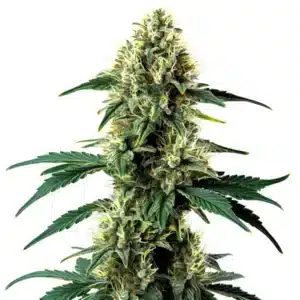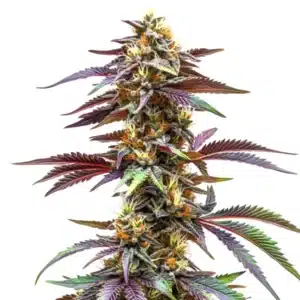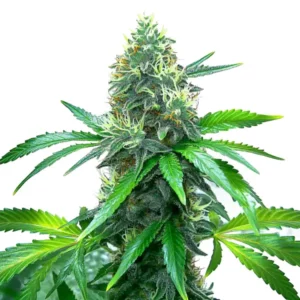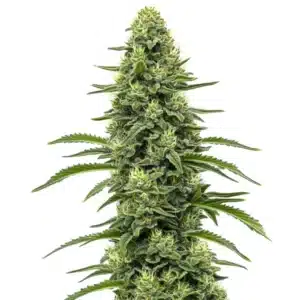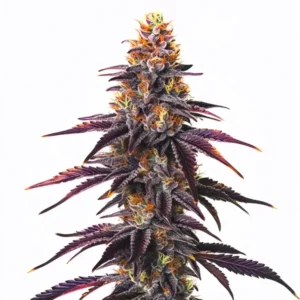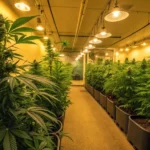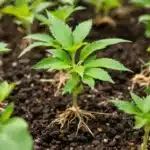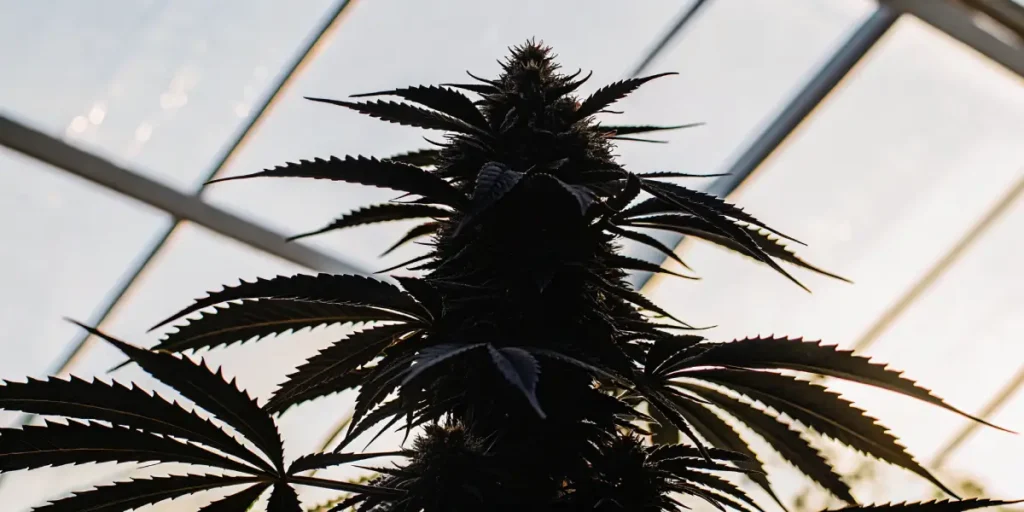
Cannabis Transpiration vs Respiration: Key Differences
Cannabis cultivation involves knowing two fundamental processes: transpiration and respiration. These processes are vital for healthy plant growth, but many growers might not know how they differ. Cannabis transpiration vs respiration: key differences is an essential topic for cultivators, as knowing how these mechanisms work can greatly enhance growing success. Let’s dive into how they function and what makes them distinct.
Transpiration in cannabis plants is akin to how humans sweat. It’s the process where water travels from the roots to the leaves and eventually evaporates through tiny pores called stomata. This mechanism helps keep the plant cool and maintain nutrient uptake. Respiration, on the other hand, is the process of breaking down stored sugars to release energy. This is essential for growth, repair, and other metabolic activities.
Recommended Strains
Blue Dream
|
|
THC | 17% - 24% (Medium) |
|
|
Type | Feminized |
|
|
Yield | High |
|
|
Phenotype | 50% Indica / 50% Sativa |
Girl Scout Cookies
|
|
THC | 18% - 25% (Medium) |
|
|
Type | Feminized |
|
|
Yield | High |
|
|
Phenotype | 60% Indica / 40% Sativa |
Both processes are critical, yet they serve different purposes. Transpiration primarily helps in nutrient transport and temperature regulation, while respiration provides the energy needed for these and other vital functions. When you grasp the differences between cannabis transpiration and respiration, you can better manage your plants’ environment and achieve a more bountiful harvest.
How Cannabis Plants Transpire vs Respire
Transpiration in cannabis is a simple yet essential process. Water absorbed by the roots travels up through the plant and is released as vapor. This flow helps with nutrient distribution, ensuring that essential minerals reach every part of the plant. It’s a continuous cycle that also plays a key role in keeping the plant’s temperature stable.
Respiration, in contrast, involves converting sugars into energy. This process happens both day and night and is crucial for growth. During respiration, oxygen is consumed, and carbon dioxide is released. This contrasts with photosynthesis, where carbon dioxide is used, and oxygen is produced. Understanding Cannabis transpiration vs respiration: key differences helps growers manage light, humidity, and airflow to create optimal growing conditions.
Besides to temperature regulation, transpiration also aids in maintaining the plant’s internal water balance. This balance is crucial as it prevents wilting and ensures that the plant remains turgid, thereby supporting its structural integrity. For growers, understanding how cannabis plants transpire vs respire can aid in diagnosing issues related to plant stress.
On the other hand, respiration is a more intricate process that supports various biochemical pathways. It not only fuels basic cellular activities but also plays a role in the synthesis of essential compounds necessary for plant defense and growth. Recognizing the symbiotic relationship between transpiration and respiration is crucial for maximizing cannabis plant health and productivity.
Environmental Factors Affecting Transpiration
Several factors influence how cannabis plants transpire. Temperature, humidity, and airflow all play a role. High temperatures can increase transpiration rates, leading to water loss. Conversely, high humidity can slow it down, which might affect nutrient uptake. Good airflow ensures that the transpired water vapor is effectively removed from the plant’s vicinity. Knowing Cannabis transpiration vs respiration: key differences is crucial, as transpiration focuses on water and nutrient movement, while respiration deals with energy production inside plant cells.
Proper environmental control is essential. For example, growing a strain like Blue Dream, known for its resilience, still requires managing these factors for optimal growth. Adjusting your grow room conditions to match the needs of your specific strain can make a significant difference in how your plants transpire.
Besides to these factors, light intensity can also affect transpiration rates. Higher light levels can increase the temperature around the plant, thereby boosting transpiration. However, this needs careful management to ensure that the increased transpiration does not lead to excessive water loss or nutrient deficiency.
Knowing cannabis plant respiration and transpiration in relation to environmental stressors can help you make informed decisions about when to adjust your grow room settings. Monitoring the microclimate around your plants will enable you to maintain optimal conditions, thus enhancing their performance and yield.
Promos & Deals
Cannabis Transpiration Versus Respiration Comparison
Comparing cannabis transpiration versus respiration reveals their distinct roles. While transpiration mainly deals with water and nutrient transport, respiration focuses on energy production. Both are interconnected yet function differently.
Transpiration relies heavily on environmental factors. It’s more variable and can change rapidly with shifts in temperature and humidity. Respiration, however, is a more stable process, driven by the plant’s internal needs. This stability is crucial for maintaining a consistent energy supply, especially during growth spurts.
In the cannabis transpiration versus respiration comparison, it’s clear that both processes are integral to plant vitality, yet they operate on different levels. Transpiration acts as a physical process, while respiration is a biochemical one, highlighting the complexity of plant physiology.
By knowing cannabis transpiration and respiration explained in depth, growers can strategize better to control plant health. Knowing when to boost transpiration through environmental adjustments or support respiration with adequate nutrition can lead to improved growth outcomes.
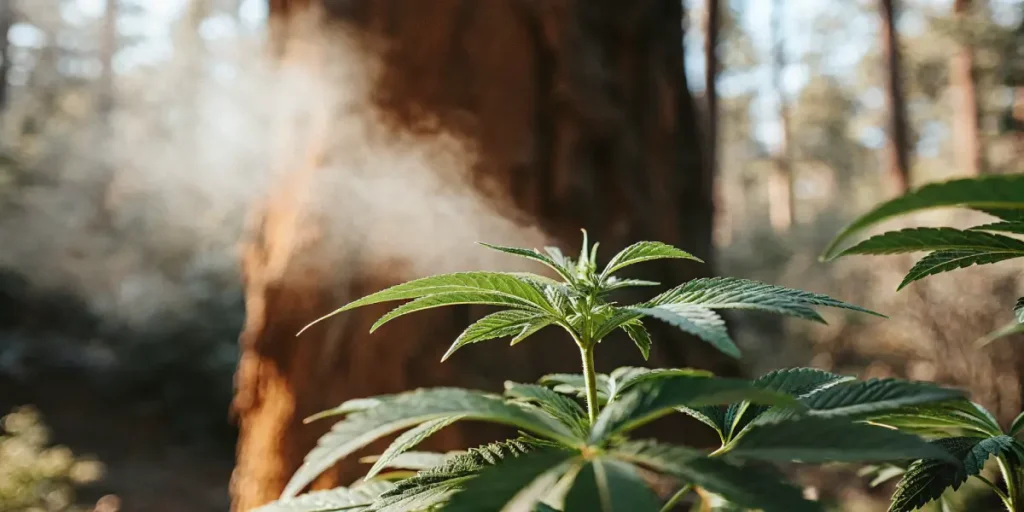
Impact of Transpiration and Respiration on Growth
Both processes directly affect the growth of cannabis. Efficient transpiration ensures that nutrients reach every part of the plant, supporting various growth stages. A strain like Girl Scout Cookies can thrive when transpiration is optimized, enhancing its robust flavor and yield.
Respiration also plays a key role in growth. It provides the energy required for cell division and expansion. Without adequate respiration, even if transpiration is optimal, the plant may not grow as expected. Balancing both processes is key to achieving a healthy harvest.
The differences between cannabis transpiration and respiration highlight the need for a balanced approach to plant care. While transpiration ensures nutrient availability, respiration ensures that these nutrients are effectively utilized for growth and development.
Knowing cannabis plant respiration and transpiration is fundamental for growers aiming to maximize their yields. Both processes need to be in harmony for the plant to reach its full potential. By leveraging this knowledge, growers can fine-tune their cultivation practices to better suit their plants’ needs.
Practical Tips for Managing Transpiration and Respiration
To manage these processes effectively, start with the basics. Ensure your plants have a consistent watering routine. Overwatering can lead to root rot, affecting both transpiration and respiration. Underwatering can stress the plant, reducing its ability to transpire efficiently.
Choose strains that match your growing environment. For instance, OG Kush is a great choice for those who can manage its specific needs. It’s vital to tailor your care to the particular requirements of the strain you are cultivating.
Implementing a comprehensive monitoring system can greatly assist in managing cannabis transpiration vs respiration: key differences. This includes regular checks on soil moisture, ambient temperature, and light intensity to ensure that both processes are supported adequately.
Finally, staying informed about the latest advancements in cannabis cultivation techniques can provide new insights into optimizing plant health. Continuous learning and adaptation are key to keeping up with the dynamic nature of plant care, ensuring that your plants thrive in their environment.
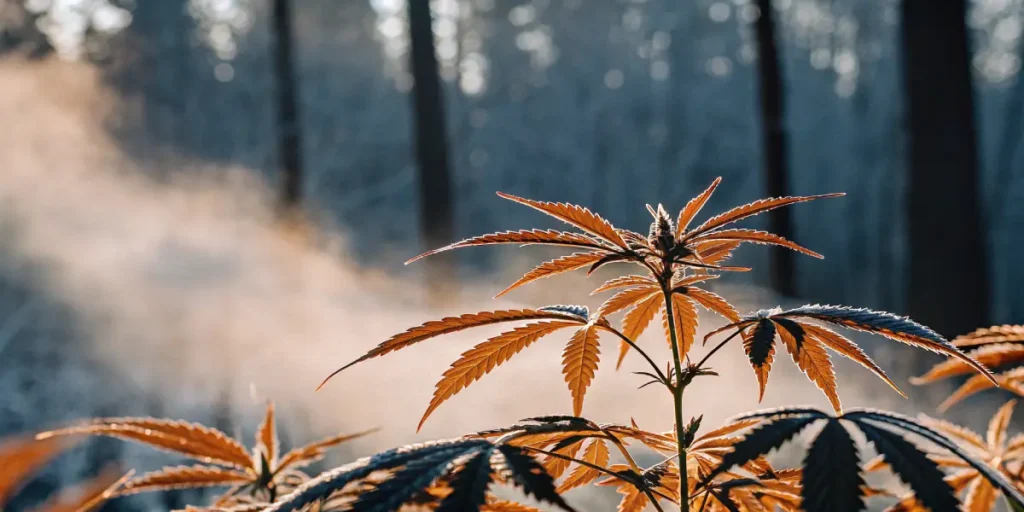
FAQ Section
What are the main differences between cannabis transpiration and respiration?
Transpiration and respiration are two separate processes with unique roles in cannabis growth. Transpiration involves the movement and evaporation of water, which aids in nutrient transport and temperature regulation. Meanwhile, respiration is about breaking down sugars to release energy, essential for growth and metabolic functions.
While transpiration is heavily influenced by external factors like temperature and humidity, respiration is more internally driven, focusing on the plant’s energy needs. Understanding these differences allows growers to optimize their growing conditions for better plant health and yield.
The cannabis transpiration versus respiration comparison emphasizes the importance of both processes in maintaining plant health. Each process has its own set of influencing factors and outcomes, making them unique yet complementary.
For growers, recognizing these differences between cannabis transpiration and respiration can lead to more targeted cultivation strategies. This understanding can inform decisions on watering, nutrient application, and environmental adjustments, all crucial for optimal plant performance.
How can I optimize transpiration in my cannabis grow room?
Optimizing transpiration involves controlling environmental factors such as humidity, temperature, and airflow. Use fans to ensure good air circulation and prevent stagnant air, which can hinder transpiration. Monitoring humidity with a hygrometer can help you maintain levels that encourage proper water evaporation.
Adjusting your watering routine is also crucial. Ensure your plants receive adequate water without over-saturating the soil. This balance helps maintain healthy transpiration rates, supporting nutrient uptake and overall plant health.
Knowing cannabis transpiration and respiration explained in the context of environmental conditions can also provide insights into optimal grow room setups. This includes selecting the right equipment to regulate temperature and humidity effectively.
Incorporating feedback from your plants’ responses can guide further adjustments. Observing leaf color, stem strength, and growth rate can offer clues to whether your current strategy is working or needs refinement.
Why is respiration important for cannabis plants?
Respiration is vital as it provides the energy needed for various plant functions, including growth and repair. It occurs continuously, converting sugars produced during photosynthesis into usable energy. This process ensures that the plant can support cell division and expansion, critical for healthy development.
Without efficient respiration, plants may struggle to grow and produce flowers. Ensuring your plants receive enough light and nutrients will support their respiratory needs, leading to a more successful harvest.
Knowing cannabis plant respiration and transpiration emphasizes the critical role that respiration plays in overall plant vitality. It is a cornerstone process that underpins many other physiological functions.
For growers, focusing on optimizing respiration can lead to healthier, more robust plants. This includes ensuring that plants have access to sufficient oxygen and are not subjected to stressors that could impede their metabolic processes.
Can environmental stress affect both transpiration and respiration?
Yes, environmental stress can impact both processes. High temperatures can increase transpiration rates, leading to excessive water loss. Conversely, low temperatures may slow down respiration, reducing energy production. Both scenarios can stress the plant, affecting its growth and yield.
Managing environmental conditions is crucial. By maintaining a stable climate with appropriate temperature, humidity, and light levels, you can minimize stress on your cannabis plants and support healthy transpiration and respiration.
The differences between cannabis transpiration and respiration become more pronounced under stress conditions. Each process may respond differently to environmental changes, necessitating careful monitoring and adjustment.
For optimal plant health, it’s important to anticipate potential stressors and implement preventative measures. This proactive approach can help maintain the delicate balance between transpiration and respiration, ensuring your plants thrive.
What tools can help monitor and manage transpiration and respiration?
Several tools can assist in managing these processes. Hygrometers measure humidity levels, helping you adjust conditions to optimize transpiration. Fans and dehumidifiers control airflow and moisture, ensuring a balanced environment for your plants.
For respiration, light meters can help you assess if your plants receive adequate light for energy production. These tools, combined with regular monitoring and adjustments, will aid in maintaining healthy transpiration and respiration rates, promoting robust plant growth.
Incorporating technology like smart sensors can provide real-time data on environmental conditions, offering a more comprehensive view of how cannabis plants transpire vs respire. This data-driven approach allows for precise adjustments to optimize plant health.
Additionally, investing in automated systems can streamline the management of grow room conditions. These systems can help maintain consistent environments, reducing the likelihood of stress and ensuring both transpiration and respiration processes are well-supported.





